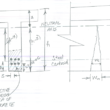Valves are critical components in civil engineering projects involving fluid transport. They regulate flow by precisely starting, stopping, increasing, or decreasing the passage of liquids, gases, and slurries through pipeline networks and hydraulic systems. Recent innovations in valve technology, such as electronic actuation, customized trims, and advanced disk control, have expanded capabilities and enabled more creative valve applications. These developments give civil engineers more options to optimize processes, improve efficiency and safety, reduce costs, and promote sustainability across municipal and industrial projects that rely on the controlled flow of fluids through piping systems.
Let’s go in-depth on its applications in civil engineering projects in this article.

Optimize Water Distribution Networks
Valves, like pressure-reducing valves and control valves from providers like Asco Valves, play a crucial role in water supply systems by regulating pressure and flow. Strategically placed control valves can optimize water distribution efficiency. For example, pressure-reducing valves ensure optimal pressure is maintained throughout the system, preventing pipe burst incidents. Control valves also minimize the water hammer effect and subsequent pipe vibration. Butterfly valves are ideal for transmission mains due to low-pressure loss. Eccentric plug valves provide accurate flow regulation and tight shutoff.
Newer smart valve technologies with IoT connectivity and remote control capabilities can further improve water network optimization. Through real-time monitoring and automated modulation, smart valves increase reliability and responsiveness. They also enable improved leak detection and preventive maintenance.
Implement Surge Protection Systems
Surge control valves instantaneously limit pressure spikes in pumping systems to prevent equipment damage. They work with other measures, like hydropneumatic tanks, to form a comprehensive surge protection solution. Surge tank valve systems installed at pump stations also absorb transient pressures and surges induced by pump start/stop cycles. This improves safety and prevents downtime losses.
Advanced surge modeling helps optimize the sizing and placement of surge protection valves based on pipeline flow characteristics. Wireless monitoring of surge events further enhances analysis and surge control.

Enhance Drainage Networks
Flap gates, duckbill check valves, and tide gates prevent reverse flow in drainage networks. New dual flap gate designs with self-cleaning scour holes improve dependability in stormwater drainage. Smart networked flap gates optimized using hydrologic models provide adaptive stormwater control.
Penstock valves enable the controlled release of drainage flows from holding ponds. Rising stem knife gate valves allow easy in-line inspection and precision flow regulation. Lifting mechanisms enable remote actuation of large penstock valves.
Direct Flow In Wastewater Systems
Eccentric plug valves and pinch valves regulate wastewater flows. New composite valves withstand corrosion for increased lifespan. Wireless sensors connected to automated valves optimize flows based on real-time data.
Like Us on Facebook!
No-slam check valve designs prevent water hammer in sewer force mains. Combination air valves vent trapped air while preventing air ingress that could impede wastewater flow.
Subscribe Us on YouTube!
Control Odors and Corrosion
Inflatable plug valves isolate sewer sections without flow disruption and contain odors. Optimized aeration control valves prevent hydrogen sulfide corrosion through regulated oxygen injection. Linings and coatings provide added corrosion resistance.
New valve designs minimize dead spaces and stagnant flow to reduce sediment accumulation and hydrogen sulfide generation. Quick-closing valves also limit odor release when sealing off sewer segments.
Regulate Flow In Rainwater Harvesting
Basket strainers, check valves, ball valves, and solenoid valves regulate rainwater catchment, storage, and supply. New vertically adjustable valve screens keep debris out while maximizing water intake. Real-time networked controls automate valve operation based on weather and tank level data.
Dual check valves specifically designed for rainwater harvesting prevent backflow contamination. Slow-closing solenoid valves mitigate water hammer upon valve closure.
Control Flow In Fracking Operations
Triple-offset ball valves provide precise throttling control over fracking fluid injection rates, improving efficiency. Hard-faced ball valves withstand abrasive proppant fluids. Chemically resistant valve linings protect against corrosion. Quick opening/closing valves optimize stimulation and prevent over-pressurization.
Passive check valves prevent the backflow of injected fracking fluids. Wireless valve monitoring improves flow control, proppant detection, and optimization.
Manage Flood Risks
Flood barrier gates use embedded flaps and check valves for automated operation. Hydraulically or pneumatically actuated flood doors integrate valve controls into their hinged flap design. Underground check valves prevent flood backflow through storm drains and sewer pipes.
Relief valves protect pipelines and pumps from high-pressure fluid loads during floods. Valve sensors prompt an automated shutdown when flooding is detected. Isolating the plant intake structures using hydraulically sealed knife gate valves prevents inundation.
Conclusion
Innovative valve solutions enable improved flow control, efficiency, safety, and reliability in diverse civil engineering applications ranging from water distribution to wastewater management. Valve technology continues to evolve, providing civil engineers with more options to apply valves in creative ways for optimal system performance. The versatile functions and capabilities of modern valves make them a versatile tool for addressing flow control challenges across municipal and industrial projects.






















